“There are no lonely
places, only lonely people”.
I will never forget
those haunting words uttered by a young Philippine Navy enlisted personnel. It
was his candid answer to one of our companions’ intense longing to leave the
island to be with her family in a city more than 600 miles away. She’s been
away from her home for months, encountered a problem she didn’t foresee, and
misses her loved ones back home. The sun
had just set and stars were starting to appear in the horizon. The comforting
silence of the place is mildly ruptured by the gentle waves and the soothing
wind. I seconded “Not all is given the chance to be here, so you might as well
enjoy.”
I was referring to Turtle Islands; population - over 4,000, a protected and natural breeding ground of green sea turtles (or in local parlance pawikan), a fifth-class and one of the farthest municipalities of Tawi-Tawi, already close to the borders of Sabah. Sandakan, the former capital of British North Borneo is actually 30 minutes away by speedboat compared to the 12-15 hours lantsa ride to the province’s capital Bongao.
I couldn’t believe I survived this (official business) sea-travel, Bongao to Turtle Islands route, na hindi ko na siguro uulitin if ever given the chance. The waves of the Celebes Sea during the monsoon season are just too big and scary. But buti na lang our special ride - the Philippine Navy fighter boat – is ready and well-equipped to endure harsh sea conditions. Without the assistance of the Naval Forces Western Mindanao, Ivy and I would not have been able to conduct our office’s community education program on migration in this beautiful and almost Cast Away island.
By convenience, Sandakan is the “gateway” to Turtle Islands. Interestingly, this means in order to visit the southwestern tip of the country, one needs to have a passport; exit the Philippines, transit to Malaysia (via Kota Kinabalu-Sandakan), and enter the country again. But nope, we didn’t take this route.
From Manila, we took the plane and headed straight to Bongao (with a short lay-over in Zamboanga City). Bongao is the seat of the autonomous provincial government (Tawi-Tawi is one of the five ARMM provinces in Mindanao); famous for its sacred mountain landmark – the Bud Bongao.
On board BRP Felix Apolinario (PC395 littoral combat ship), we were supposed to depart from Lamion Bay in Bongao, but call it a military strategy or decoy, we changed route and place of departure to the Naval Station Juan Magluyan, the Naval Operating Base in Batu-Batu, Panglima Sugala, neighboring island of Bongao. Instant overnight at the naval base wasn’t bad after all.
Batu-Batu is a fishing community, quieter and less busy than Bongao. I got to explore the market and the mosque for about an hour the next morning, while waiting for the bigger BRP Waray (LC-288), which refuelled our boat.
We left around lunchtime, generally had a smooth sail, and arrived in Taganak (the biggest inhabited island of Turtle Islands) very early the next morning.
The first thing I noticed upon arrival was that the 124-hectare island is surrounded by fine, powdery white-sand; and the waters so crystal clear. I love the wooden dock as it gives a rustic and provincial feel. Boats mainly have no katigs and were built to withstand the sometimes unforgiving waves. Most of the houses are located beach front; the municipal hall, police, and local school are just a stone’s throw away from each other. And the people, predominantly Muslims, are so warm and welcoming. They were actually happy to see people coming from Manila, as they rarely get visitors from the national government.
We stayed at the Mayor’s house, which is just behind the municipal hall. He was in Zamboanga during our visit but he left us to the care of his OIC, the police and his house helps, who pampered and fed us with the freshest seafood – shrimps, tiger prawns, fish, and lobsters - every meal time.
How I wish I could extend my stay to a week, as there are so many fascinating things that make Turtle Islands a unique “immersion” destination.
First, no signal of Globe or Smart; but they could access Malaysian cell site; thus most of the residents with cellphone use Malaysian simcards (dun ko lang nalaman kung bakit wala ako ni isa matawagan from Taganak months before). It’s funny too that their mobile internet connection and wi-fi are way faster than in Bongao. Taganak people are very active in social media.
Second, maybe 90% of the products are from Malaysia. K2, the mineral water I was drinking, is from Sandakan. The Apollo chocolate layer cake I was munching during one of the meetings is from Johor Bahru. The Mi goreng I bought from the sari-sari store, is from Sarawak. Rice and sugar, two of the most common food staple, are from Sabah. Almost everything, not fished from the seawater, comes from Malaysia. Somehow, it feels like I was in another country.
Third, people use Malaysian ringgit as currency. Some store owners accept ringgit as payment.
Fourth, because of the proximity of Taganak to Sandakan, both local governments agreed that people from Turtle Islands could access the nearest market and hospital of Sandakan (in times of emergency), even without passport. All they need is to secure a letter recommendation from the Mayor of Turtle Islands and the approval of the Philippine Coast Guard.
Fifth, again because of the proximity between the two municipalities, Turtle Islands are among the backdoor exits for Filipinos who want to work illegally (or without any proper and legal documents) to Malaysia and other neighboring countries. Some of our kababayan are smuggled or trafficked to Sandakan via speedboat; some hidden in containers just so they could cross the borders.
Sixth, interesting trivia on geography. Turtle Islands are actually a group of 10 islands both shared by Tawi-Tawi and Sandakan. Seven islands is within the Philippine territory, while the other three are in Malaysia - all adjacent to the international treaty that separates the two countries. Go check IG location of Turtle Islands and you’ll be surprised, at times confused, which is which (although based on what I’m seeing on IG, Turtle Islands in Malaysia are more developed and cater to more tourists).
Seventh, turtles. They are practically everywhere with a population almost the same number as the people. Because the islands are the only major nesting habitat of green sea turtles and the 11th major nesting site in the world, they were declared in 1996 as Turtle Islands Heritage Protected area by the governments of the Philippines and Malaysia. Further, they were proclaimed in 1999 as Wildlife Sanctuary and identified as “extremely high for biodiversity conservation”, under Philippine Proclamation No. 171. The sea turtles are “keystone species” and play an important role in marine ecosystem as they maintain a healthy coral reefs and sea grass that serves as breeding ground for fishes and small crustaceans. They abound in the beautiful, almost deserted marine sanctuary of Baguan Island.
We got to see and experience how pawikan lay eggs at night until the break of dawn. During their nesting season (July-August), as much as 100 pawikans lay their eggs all over the island. Though it wasn’t my first time to see a pawikan laying eggs, it was a first for me to see baby pawikans. They’re so cute and fragile and run very fast into the waters right after hatching. Sadly, they are not used to human petting and demand to be let go.
There are no inhabitants in the island (except for the three DENR personnel and caretakers) as it was declared a “strict protection zone” closed to all human activities except scientific studies, monitoring and enforcement. From the caretakers, I learned several trivia about pawikan. Such as for female pawikan, home is where the heart is, because no matter how far they’ve travelled the world, they would always return to the same nesting grounds where they were born. And they can lay eggs as much as hundred (but unfortunately only about 1% will survive; and this is due to natural predators, human poachers, or harsh environment conditions). And after labouring and laying eggs, they could already engage in some loving-loving with their partner and in a few weeks’ time buntis na naman sila.
And lastly, the Turtle Islands sunrise – soft, lovely, magical. I observed that it’s totally okay to watch the sun after it rises (for the first few minutes) even without sunglasses. Sun rays aren’t hurtful to the eyes and don’t cause camera lens flare. Sunsets too are equally beautiful.
Maybe it will still
take a long time before Turtle Islands will become a vacationers’ playground. Slowly
the town is progressing but there is still a lot to be done, especially in
terms of transportation access and access to health service. Although in a way,
its remoteness continue to preserve the islands’ pristine, natural beauty, and
the sea turtles which keep our ocean healthy.
How to reach Turtle Islands: Option 1. From Manila, take a plane bound
for Kota Kinabalu-Sandakan (connecting flights). From KK, one could also opt to
take land travel going to Sandakan. For Filipinos, Malaysia is a visa-free
country, so passport is only needed when entering. From Sandakan, it is a 30
minute speedboat ride to Taganak. As a courtesy and for security reasons, coordinate
with the mayor or police of Taganak (https://www.facebook.com/turtleislandsmps.pcr)
prior the visit. The Mayor’s house usually accepts guests; there are also other
homestays. Option 2. From Manila, fly
directly to Bongao (with lay-over in Zamboanga City). From Bongao, there are
lantsa bound for Taganak (15 hours boat ride); but the boat schedule is not
regular and dependent on the weather and sea conditions (kung maalon, malakas
ang hangin at maulan, hindi usually naglalayag). Option 3. From Bongao, rent
speedboat bound for Taganak, usually 20k one-way. Option 4. From Manila, fly to
Zamboanga City; then take a lantsa bound for Sandakan (2 days boat travel).
Again boat schedule is not regular. From Sandakan, one could already cross to
Taganak.

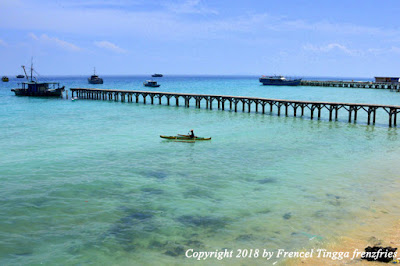








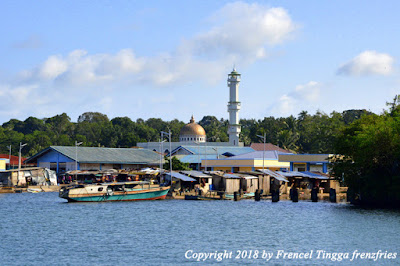


















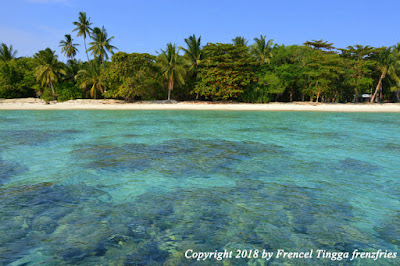


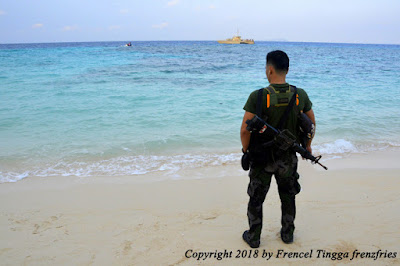



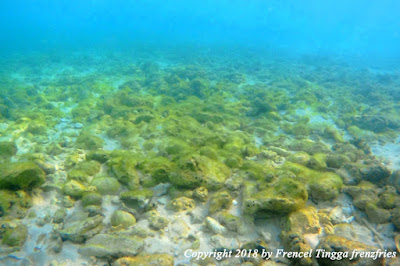














2 comments:
I'm amazed by the wealth of trivia about these remote but interesting cluster of islands. I can't believe it's that close to Malaysia but that far from the rest of the Philippines. Truly a sui generis!
Thanks :) Le Bunny Esquire
Post a Comment